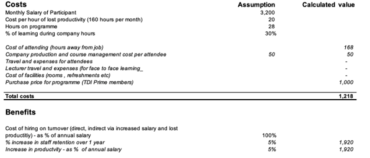Wealth Management and the InsurTech Renaissance of the Annuity
It’s a different world now
The baby boomers are retiring. When they made their plans for the future it was an analogue world. A world where individual advice was based on human judgement, the personal touch and “trusted, expert” relationships. This was how the world of wealth management worked pre-Internet.
However today, for many US boomers, the prospect of actually giving up work is still some way off. This recent US Study by the Insured Retirement Institute reported that as many as 2 in 5 of American baby boomers have nothing saved for their retirement.
Increased longevity and the massive decline in employer pensions in the 21st century are major factors behind the prediction that as many as half of Americans will not be able to maintain their current lifestyle.
The point is that the baby boomer generation, and Gen X for that matter, have shifted from creating retirement wealth through a lifetime of work to protecting what they have for now.
Which means that the wealth management target client has changed. It’s no longer a baby boomer market, or a Gen X market for that matter.
Now it’s the millennials who are the core client (target) base for wealth management. With 40% of the global adult population under the age of 35 years old, this is a generation who has only known a digital world in adult life.
Rise of the affluent millennial
But it is more than a digital divide that separates the generations. Millennials’ attitudes and behaviours to creating their own wealth are different too. These differences are shaped by factors such as; debt funded education, greater levels of social conscience and engagement, a broader world view and higher levels of self-employment.
Which is a challenge for the wealth management industry as they adapt to a different customer profile. Building a wealth management proposition for the millennial generation has to reflect the different demographics compared to baby boomers and Gen X.
There’s tons of research out there that reports how attitudes and behaviours have changed over the generations, even back to the silent generation. In this 2015 survey of over 9,000 millennials across 10 countries by LinkedIn and IPSOS they found;
- millennials expect to be financially able to travel and see the world,
- 60% expected to be wealthy (even though they earn about 20% less than the baby boomers,
- they do not rely solely on wages for their income (trader by day, Uber by night),
- and are more likely to carry debt than Gen/X (repaying student debt has replaced saving for retirement),
- 9 out of 10 millennials use social networks for input on financial planning,
- as well as being more likely to take advice from family members,
- and are heavily influenced by their peers,
- millennials are half as likely to be married compared to baby boomers at the same age,
- they are 7 times more likely to share their personal information with brands they trust.
The financial literacy problem
There is another dynamic that is important to consider when looking at how the wealth management industry serves the millennial generation. Financial literacy, or the lack of it!
The millennial generation may be more informed than their predecessors, but not necessarily in everything. They are more likely to know who Kim Kardashian is than to understand the impact of inflation on their savings over time.
In itself, there’s nothing new in this, but the fact is that the level of financial literacy in the US has been dropping for years.
According to survey results by US regulator FINRA, the level of personal finance literacy has fallen every three years since 2009. They found that 76% of millennials lack basic financial knowledge. Which is hardly surprising when only 14% of US students are required to take a personal finance class in school.

What is clear from the survey is that this lack of financial literacy is causing stress and anxiety among millennials (who, remember, now account for 40% of the adult population).
What does this all mean for wealth management?
Millennials are digital natives, savvy with the world, with a social conscience, an optimistic outlook, and a natural tendency to be engaged. They also know they have a knowledge gap when it comes to personal finance and seek advice and guidance from family and friends to close it.
The challenge for wealth management is how to adapt the way the industry engages with this audience.
Being 100% digital goes without saying to a generation where 87% of millennials use between two and three tech devices at least once on a daily basis.
The wealth management proposition also needs to be relevant. By which I mean the products must meet the different protection requirements of the millennial. In today’s world of increased longevity, losing your job or ill health are greater risks than dying early. It was the other way around for baby boomers who were used to jobs for life and to shuffle off this mortal coil before they reached 70.
First, there was Abaris
To find out how the digital generation of tech entrepreneurs are approaching wealth management, I turned to an old friend of mine, Matt Carey.
In the days before InsurTech was called InsurTech, I wrote an article that featured Matt and his startup firm called Abaris. I chose Abaris because they were the first platform in the US market to provide a real-time, like for like comparison of retail annuity products.
Abaris is a business that represents exactly what InsurTech is about. They simplified a previously complicated buying issue for prospective retirees (in this case, baby boomers), and in doing so, took cost out of the supply chain whilst improving the consumer experience at the same time.
The article looked at how Abaris had made the comparison of income annuities a simple and easy online process. Especially when you consider how clunky the conventional approach was/still is.
Then came Blueprint Income…
It’s over three years since I wrote that article featuring Abaris and I recently caught up with Matt to talk about their new business called Blueprint Income.
This is still an annuities play, but the pivot for Matt is to shift from sourcing annuities for boomers to providing a retirement savings plan for millennials.
“We’re building the first digital retirement plan that guarantees you wont run out of money as long as you live.” Matt explained. “The market issue we are addressing is the retirement savings gap facing the millennial generation.”
Blueprint Income is reinventing annuities with a simple low-cost, subscription based savings plan. Matt explained: “The existing annuity market hasn’t kept pace. Remember, it was built for the days when traditional insurance agents used paper forms and complicated processes to sell products that were expensive to maintain.”
Retirement income guaranteed to last a lifetime
Blueprint’s mission is to provide a simple, cheap and easy solution to the near-extinct core feature of the defined benefit pension. Namely, a guaranteed retirement income for life, aka an annuity. The key innovation to achieving this mission is Blueprint Income’s subscription approach.
Matt explained: “Typically, an income annuity requires a large sum of money when it is bought and set up. This is a big outlay, and one that many aren’t able or willing to make. At Blueprint Income, we have kept the initial investment low at $5k.
“Once the client is up and running with their personal pension, they can deposit as little as $100 a month. We provide them with financial planning tools so that they can model the impact of increasing their savings, adjusting their retirement date, or changing the amount they want as the guaranteed income.
“We’ve built our platform to be 100% digital. The initial quote is all customer-driven and is a simple question and answer process. It takes about a minute to get a quote back.”
| “The insurance industry is far slower to adapt to newer technologies. And within insurance, annuities are by far the slowest” |
| Michael Walsh, a general partner at Green Visor Capital who led a $2.75m investment in Blueprint Income. |
Nobody wants to outlive their money
In a world of declining employer pension contributions, huge pressures on social security and state provisions, increased longevity, lifetime education debt, and personal healthcare costs, the chance of outliving your money is an ever increasing likelihood.
Which increases the attraction of, and return to, an annuity approach to retirement income. Add to this a digital play. Throw in a simple and affordable subscription model. And you get an InsurTech solution to an age-old problem.
About time too!
Because, let’s face it, up until now this segment of wealth management has not been the focus for either InsurTech or FinTech. Pensions and annuities are neither easy, sexy nor cool. Although that doesn’t mean that there isn’t an opportunity.
In the recent Asset Management Market Study by the UK’s Financial Conduct Authority, it reported the average operating margin for asset managers at 36%. It’s hard to find industries with that level of margin… and scale! The UK has the 2nd largest asset management market in the world with £8trillion AUM, inc £3trillion in pension funds.
As I so often quote Bezos, “your margin is my opportunity”.
Wealth management relevant links
Digital Insurer Life Protection & Savings library
The Rise of the Affluent Millennial from EFMA
CBInsights – Where insurers are investing in wealth management
Distribution disruption – engaging today’s constantly connected consumer
Engaging with Millennials on Retirement
Rick Huckstep is Chairman of The Digital Insurer, a keynote speaker, investor, advisor and social media commentator on all things InsurTech



























































